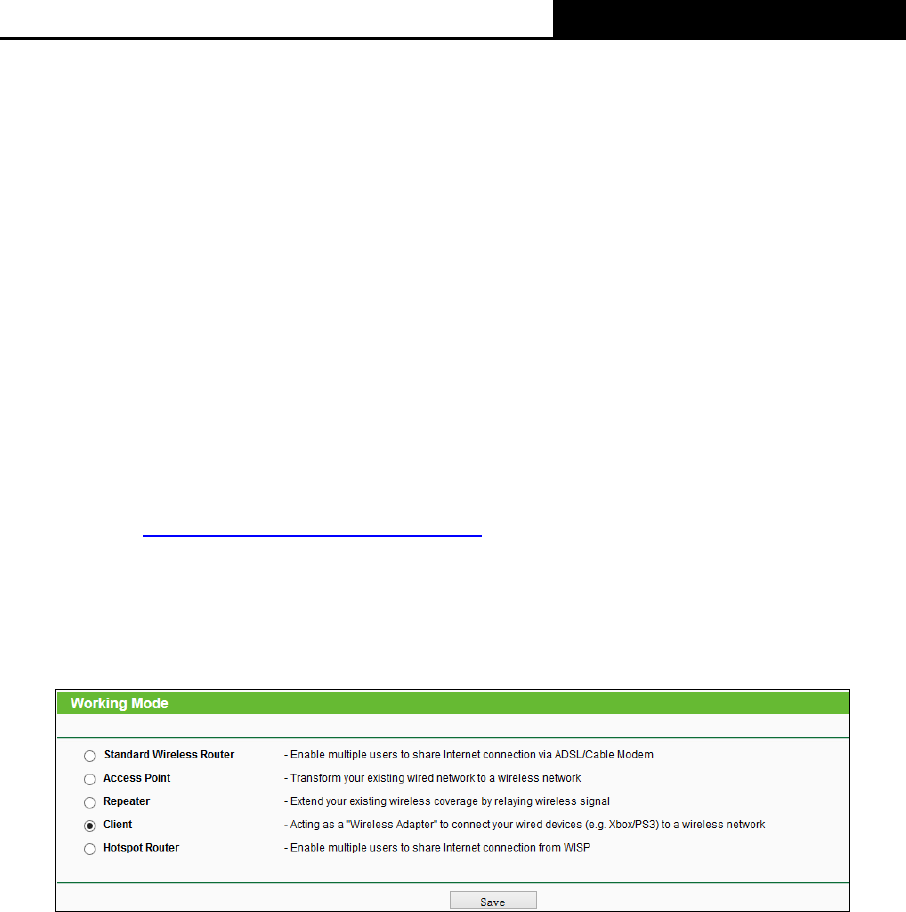User's Manual
Table Of Contents
- Package Contents
- Chapter 1. Introduction
- Chapter 2. Connecting the Router
- Chapter 3. Quick Installation Guide
- Chapter 4. Configuration for Standard Wireless Router Mode
- Chapter 5. Configuration for Access Point Mode
- Chapter 6. Configuration for Repeater Mode
- Chapter 7. Configuration for Client Mode
- Chapter 8. Configuration for Hotspot Router Mode
- Appendix A: FAQ
- Appendix B: Configuring the PC
- Appendix C: Specifications
- Appendix D: Glossary

TL-WR810N
300Mbps Wireless N Mini Router
- 166 -
• MAC Address - The physical address of the Router, as seen from the WLAN.
Traffic Statistics - The Router’s traffic statistics.
• Received (Bytes) - Traffic that counted in bytes has been received out from the WAN port.
• Received (Packets) - Traffic that counted in packets has been received out from the WAN
port.
• Sent (Bytes) - Traffic that counted in bytes has been sent out from the WAN port.
• Sent (Packets) - Traffic that counted in packets has been sent out from the WAN port.
System Up Time - The length of the time since the Router was last powered on or reset.
Click the Refresh button to get the latest status and settings of the Router.
7.3 Quick Setup
Please refer to Section 3.2: Quick Installation Guide.
7.4 Working Mode
Please select one you want. Click Save to save your choice, which is shown as Figure 7-3.
Figure 7-3 Working Mode
Standard Wireless Router - In this mode, the device enables multiple users to share the
Internet connection via ADSL/Cable Modem. The LAN devices share the same IP from ISP
through Wireless port. While connecting to Internet, the LAN/WAN Ethernet port works as a
WAN port at Standard Wireless Router mode.
Access Point - In this mode, this device can be connected to a wired network and transform
the wired access into wireless that multiple devices can share together, especially for a home,
office or hotel where only wired network is available.
Repeater - In this mode, this device can copy and reinforce the existing wireless signal to
extend the coverage of the signal, especially for a large space to eliminate signal-blind
corners.










